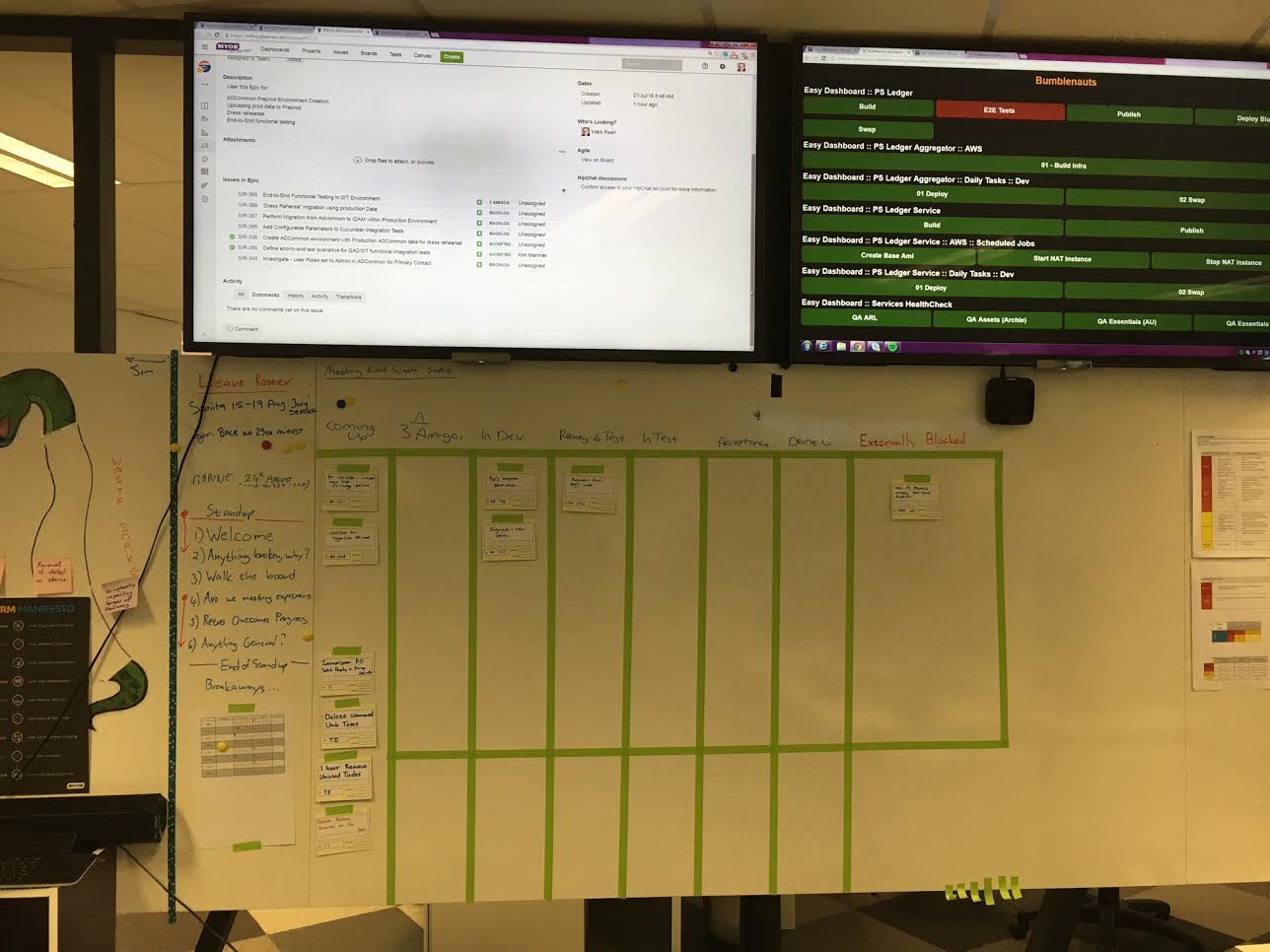With my recent move to a new team and organization, I have the opportunity of contrasting my old teams processes with a new teams processes.
Something that is always a ‘touchy’ conversation is the one regarding how to represent work in the team - the ever heated discussion on whether a physical board or a digital board is the best way to go always surfaces.
In my old team we used a physical board. My new team was using a digital board which I used for about a month. In the new team we are now experimenting with a physical board. This provided a great opportunity to contrast both processes adn highlight the advantages / disadvantages of each approach.
Below are some of my observations, if you have some insights please add you comments…
Features vs. an Enhanced Experience
In discussions about digital vs physical boards one can argue that a digital board can, if set up correctly, do everything a physical board does. While this may be true, it is not about whether it is theoretically possible to do it, it’s also about the experience you have while doing it. Let me try explain…
On paper two things can look like the same thing when comparing features - but when using them you get a totally different experience. This is what I have found with digital and physical boards. While they can have the same ‘features’ the experience can be totally different.
Contract Negotiation vs Collaboration Tool
Digital boards provide a useful mechanism for contract negotiation with external teams. As a collaborative tool for a co-located team they are not ideal. Physical boards are poor contract negotiatiors, but a far superior collaborating tool for a team.

Physical Boards
Advantages of Physical Boards
- Extremely flexible, easy to change
- Tactile
- Visible all the time
- Large
- Encourage verbal communication
- Creates a focal point for standups
- Physical restriction on space can help restrict over committing to work and provide visiblity on capacity
- When doing daily standup, person walking the board faces the group which leads to an engaged conversation
- Encourages team ownership as generally nobody externally is looking at the board
Disadvantages of Physical Boards
- Metric gathering requires extra effort
- Can loose stickies that fall off the board
- In some environments it is hard to find a suitable place to put it
- Does not work well in distributed teams
- No history
- Policies for placing things on the board can be broken or lost
Digital Boards
Advantages of Digital Boards
- Metric gathering is typically easy
- Works well in a distributed environment
- Records a detailed history and meta data
- Can enforce certain policies for moving items into a lane
Disadvantages of Digital Boards
- When doing daily standup, everyone faces the screen, even the person walking the board which detracts from conversation
- Stand has less flow as people use a ‘mouse’ to move items on the board
- Infinite ‘digital’ space can lead to poor visiblity on capacity
Other Opinions
A colleague of mine shared the following comments regarding digital team boards installed at a client.
I've reserved judgement until I see it running - it's not something I would have done, but I haven't seen one in action before.
I think it depends what you want a board for. If you think it is about measuring and reporting then a digital board makes it less work to do that. If you think it is about a lightweight representation of what your process looks like today, and where all the work is right now, then you'll be more inclined towards stickies on a whiteboard in your own work area. Physical boards can be tweaked constantly in real time by the people doing the work.
The transaction cost of tweaking JIRA is just high enough that people won't do it - they will rely on the JIRA admin to know what is best, and now the team doesn't own their process anymore, they are letting the tool dictate it.
The board could be very useful for design sessions. Then again though, perhaps if you can't draw your design out on a whiteboard then you either don't know it well enough or it is too complicated.
Perhaps for distributed teams if they could see the same projection it might enable something interesting.
As I said, I've reserved judgment until I see it in action, I don't have high hopes.

